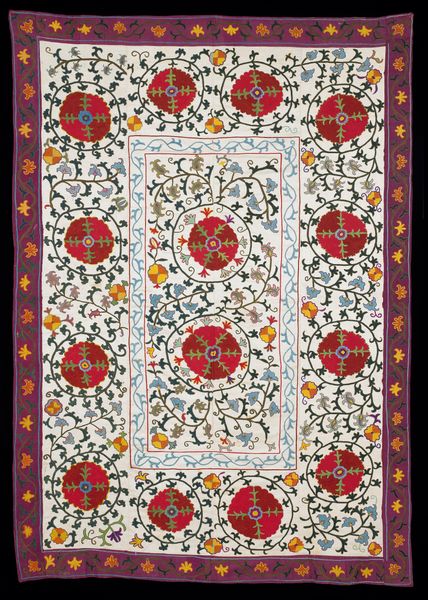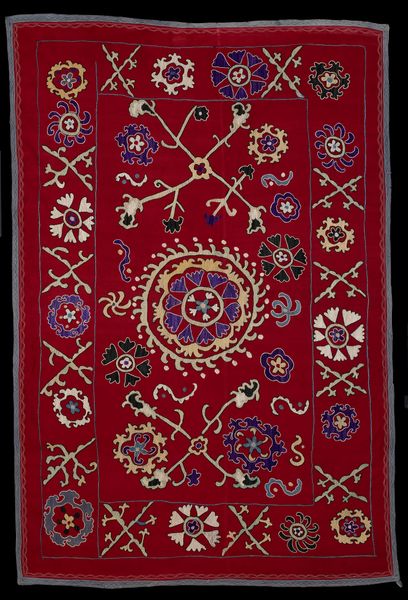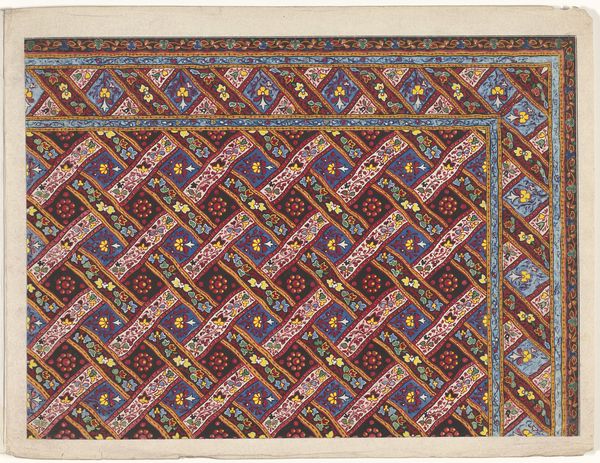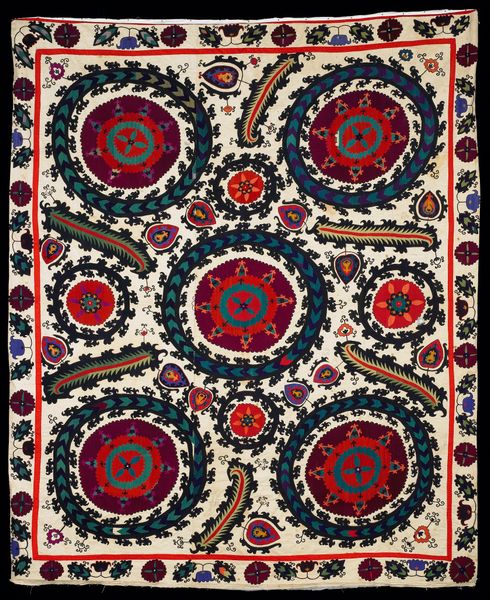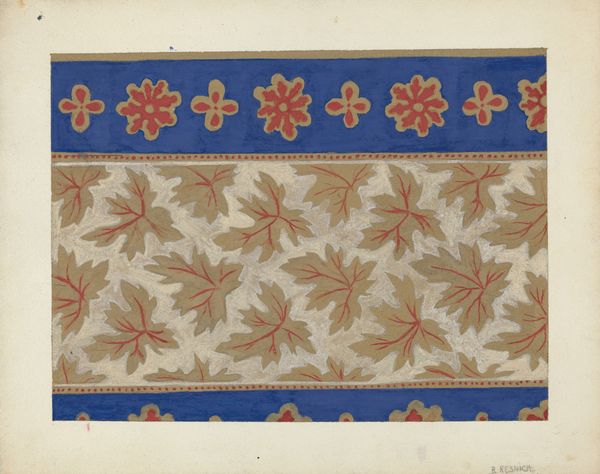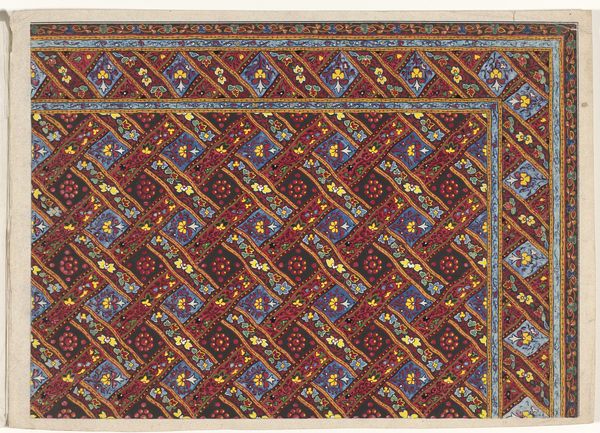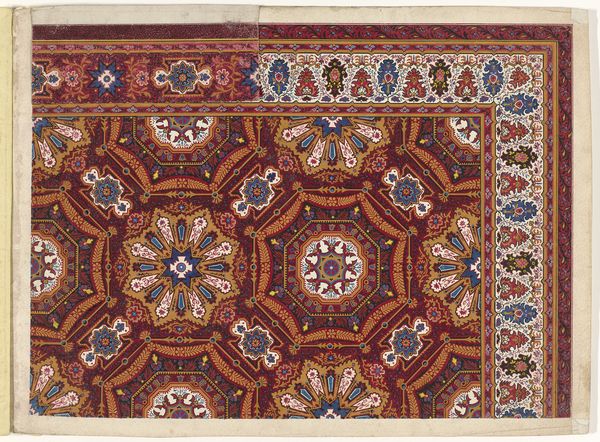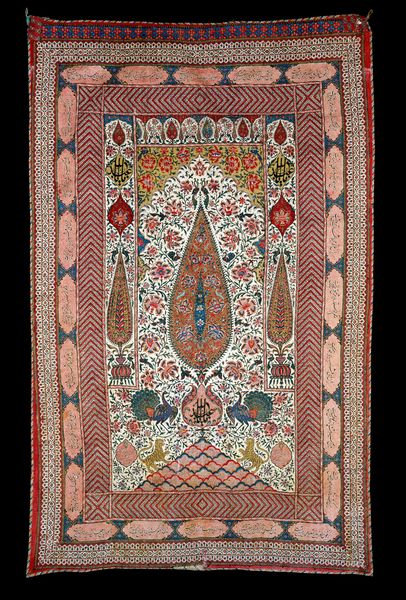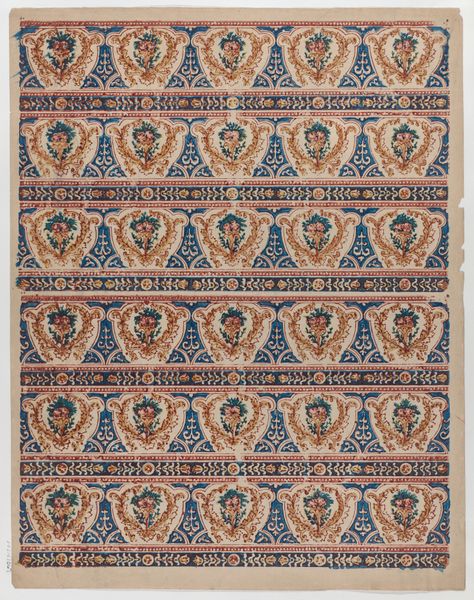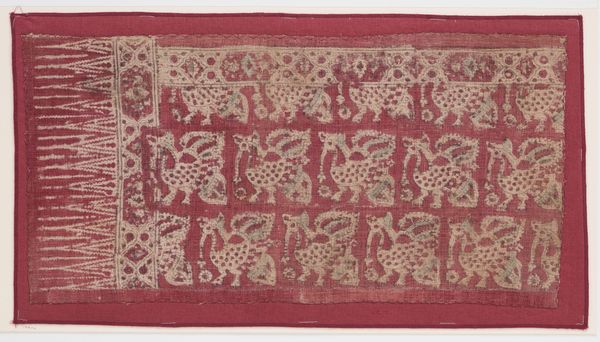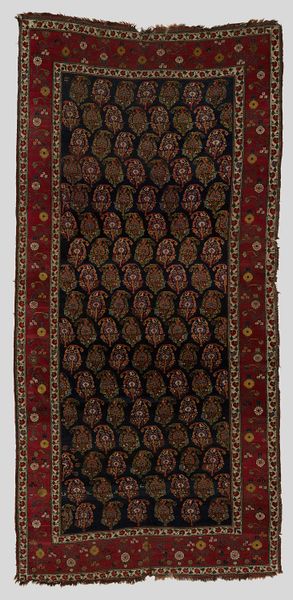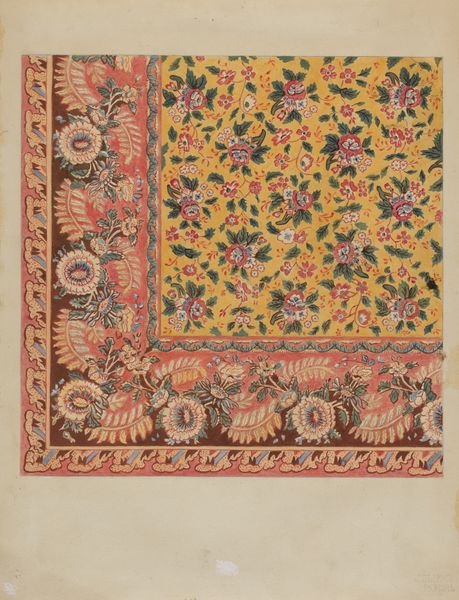
Decorative hanging panel of an official’s robe c. 19th century
0:00
0:00
silk, weaving, textile
#
silk
#
pattern
#
asian-art
#
weaving
#
textile
#
figuration
#
geometric pattern
#
decorative-art
#
decorative art
Dimensions: 10 1/4 × 21 11/16 in. (26.04 × 55.09 cm) (including fringe)
Copyright: Public Domain
Curator: Before us, we have an exquisite object, an anonymous "Decorative hanging panel of an official’s robe" dating from the 19th century. It is currently part of the Minneapolis Institute of Art's collection. Editor: Immediately striking! The deep crimson background evokes such intensity. There is an intentional ordering of imagery and color, which also contrasts well with the soft, swaying tassels that border its bottom. It seems simultaneously vibrant and grounded. Curator: Precisely. The piece consists primarily of silk, meticulously woven and embroidered. Focus on the repeating pattern; what does it evoke to you? Editor: I notice the cranes rendered in neat squares—alternating color. This regulated rendering of cranes is more than aesthetic. Cranes are a cultural signifier; emblems of longevity and status. A powerful visual message. Curator: Yes, the specific arrangement adds to the panel’s visual rhetoric. Note the geometric nature, this constant subdivision and strict rendering—in many ways the panel, especially if displayed publicly, creates and reifies authority through design itself. Editor: Certainly, its creation and wearing would be anything but neutral, further imbuing it with meaning. This ornate construction, likely designating specific officialdom, must be contrasted with the lack of attribution. An act, as you said, of reifying authority but silencing the individual artist in service to an overarching imperial and aesthetic system. Curator: The absence of the artist’s name allows the aesthetic design and meaning to move beyond individuality, permitting a focus solely on structural properties within the panel and the system it represents. Editor: However, by understanding it beyond the structural components we expose a deeper layer: How textiles throughout time carry a unique ability to weave together the intricate tapestry of personal narrative, sociopolitical context, and aesthetic design. Curator: It is difficult to ignore the interplay of artifice and symbolism woven within. The decorative panel functions both as a piece of woven structure and a historical artifact steeped in the codes and hierarchies of its time. Editor: Right, and through historical investigation we start to pick at these threads and realize the intense complexity and cultural value layered into a single art object.
Comments
minneapolisinstituteofart about 2 years ago
⋮
This embroidered silk textile is an example of a decorative panel, called a husu, that would have decorated the back of an official’s courtly or ceremonial garb. The motif and materials of husu were differentiated based on the official’s position and rank. This late Joseon example featuring four pairs of facing cranes, in blue, yellow, and white, would have been reserved for a civil official. Husu were used from the end of the Goryeo period through the Joseon period.
Join the conversation
Join millions of artists and users on Artera today and experience the ultimate creative platform.
